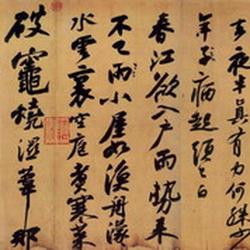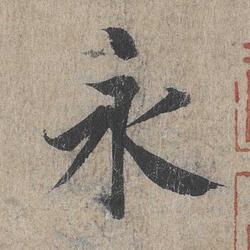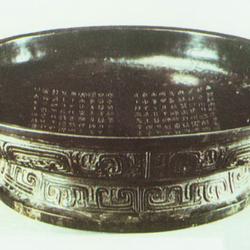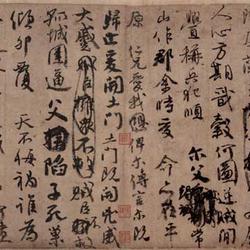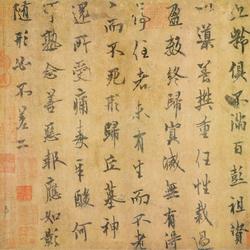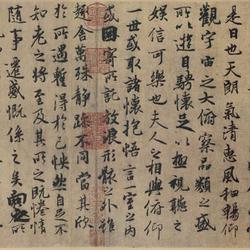Tang Dynasty - Huaisu's "Autobiography" - the best cursive script in the world
【Name】Self-narrated poems
[Category] Kuang Cao Dharma Book
【Author】Huai Su
【Form】Paper
【Era】Tang Dynasty
[Original size] 28.3 cm in length and 775 cm in width
【product size】
[Current Situation of Cultural Relics] Taipei National Palace Museum
Details of the main post of "Self-narrative Post":
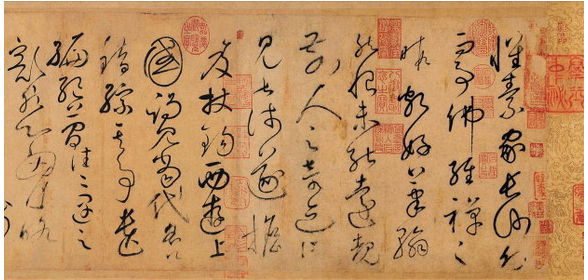
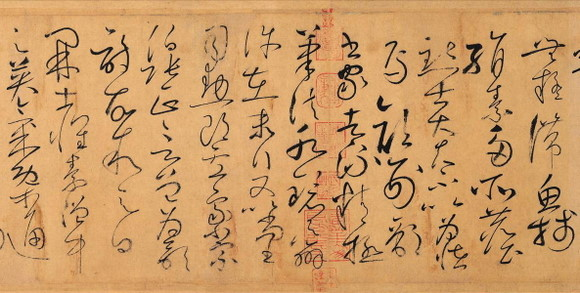
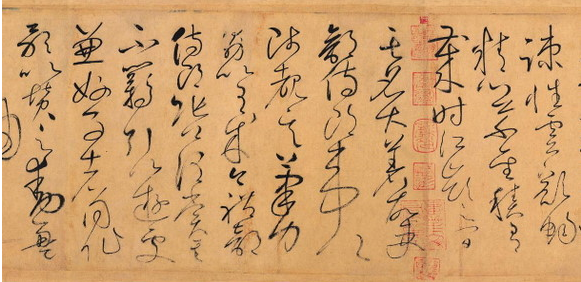
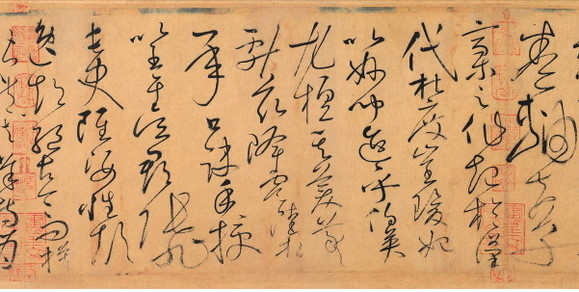
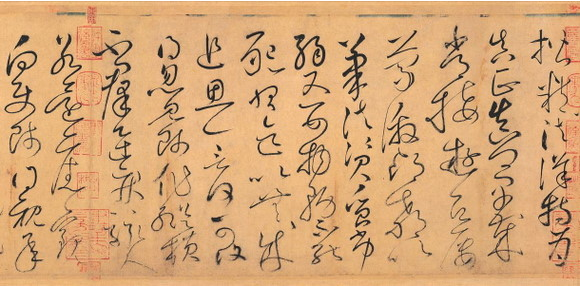
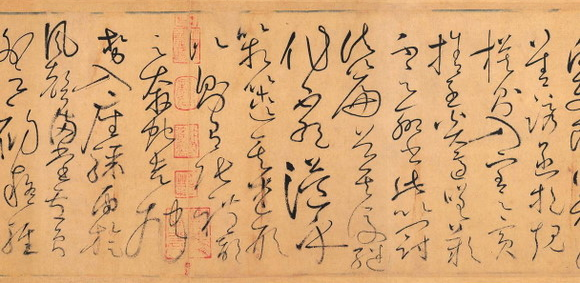
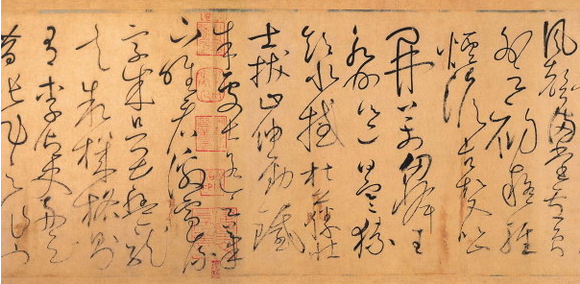
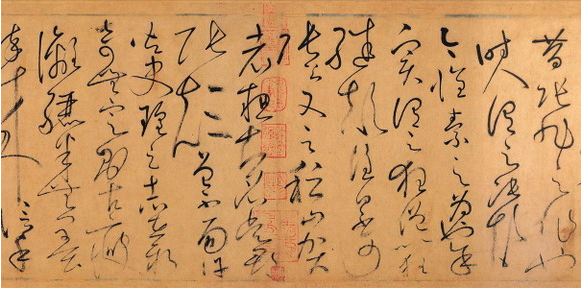
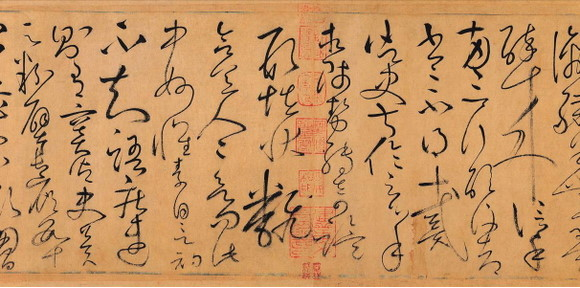
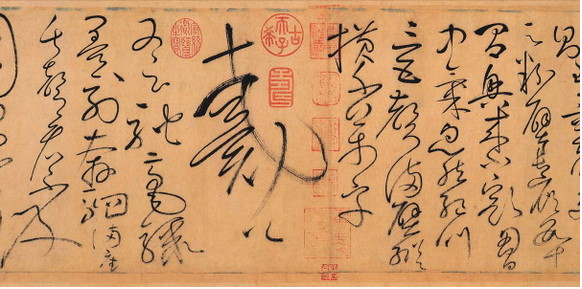
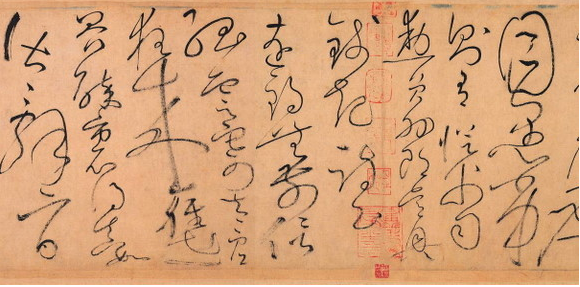
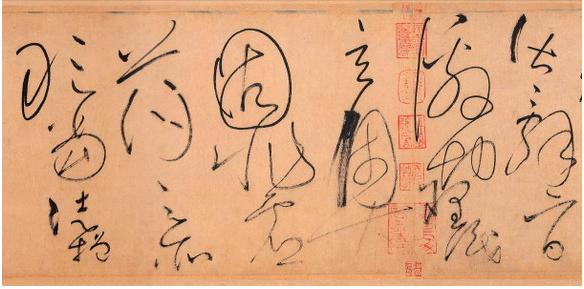
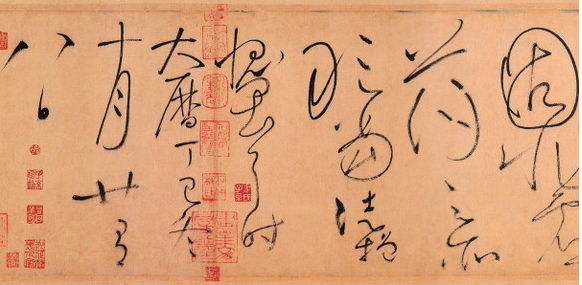
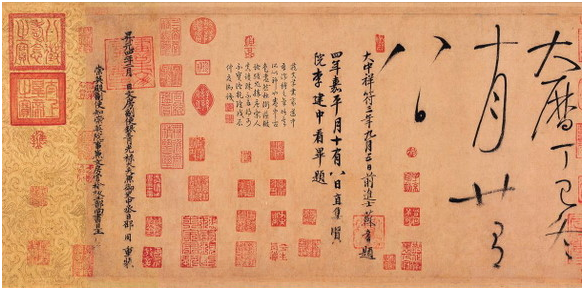
original:
Huaisu grew up in Shasha, and he became a Buddhist since he was young. In his spare time, he practiced Zen and was quite good at penmanship. However, I regret that I was not able to see the miracles of my predecessors from afar, and I only saw so little. So he carried the tin stick and traveled to the west to visit the country, where he met the famous princes of the time and got involved in many things. The posthumous compilation is extremely simple, and when I often encounter it, my mind suddenly opens up, and I feel a little sluggish. The fish paper is plain and has many dust spots, but the scholar-bureaucrats do not think it is strange.
Yan Xingbu was a calligrapher with excellent brushwork and water mirror recognition, which was probably in his late career. In addition, Lu Xiang, Xunlang of Shangshu, and Zhang Zhengyan, Xiao Zongbo, once wrote poems, so they described it as follows: "The Kaishi Huaisu is the best among monks, with a clear spirit and a free spirit. He carefully cultivates the saints and accumulates for many years." At that time, among the rivers and ridges, his name was famous. Therefore, Wei Gongzhi, the minister of the Ministry of official affairs, saw his writing power, and he became successful. Today, Zhang Gong, the minister of the Ministry of rites, said that he would be rewarded for his unruliness and lead him to travel. Those who are also doing good things will write songs together. With praise, the scrolls are moved. The drafts of my husband started in the Han Dynasty. Du Du and Cui Yuan began to read wonderful stories. Boying was especially good at beauty. As a result, Zhang Xu of Wu County has a long history. Although his appearance is elegant and unparalleled in ancient and modern times, his models are precise and detailed, which is especially true. Zhenqing often traveled around in his early years, and he was repeatedly inspired to teach him brushwork. His qualifications are weak and he is an infant. I can't study things seriously, and I have achieved nothing so far. I think about it, how can I get it back? Suddenly I saw the master's work, which was out of the ordinary, and the speed was astonishing. If I still have the old view, I learned from the master personally and taught him the scale. , then the guest who entered the room would leave his son and laugh at him. He sighed at the inadequacy, and talked about the book. This is the first of all the chapters."
There was an endless succession of works, which overflowed the boxes and boxes.
The description of the appearance is similar, as Zhang Libu said: "I was seated like a snake and a snake, and the sound of sudden rain and whirlwind filled the hall." Yuan Lu said: "At first, I suspected that the old pines are light and pale, but it is also like a mountain with thousands of peaks." Wang Yongzhou said. : "The cold ape drinks water and shakes the withered vines, and the strong man pulls up the mountain and stretches out his strong iron." Zhu Chushi said: "I only see the electric current in the writing, and the words are afraid of the dragon coiling away."
Speaking of Ji Ge, Li Yushi Zhou said: "In the past, Zhang Xu's work was called Zhang Dian, but now Huai Su's work is called Mad Monk. Who says it is not possible to follow Dian with madness?" Gong Youyun said: "Jishan He is a well-known old man, Zhang Dian of Wu County has never met." Xu Yushi Yun said: "Aiming for novelty and no fixed rules, the ancient skin is thin and half without ink. When I was drunk, I wrote two or three lines, but when I woke up, I wrote I can't write it." Shu Lun, the censor of Dai, said: "The palmistry master's gestures have become strange, and the weird and strange shapes are suitable for translation. Everyone wants to know the secret of this, but Huai Su says he didn't know it at first."
Speaking quickly, Dou Yushi Ji said: "There are dozens of pink-walled corridors, and when I wake up, I am filled with breath. Suddenly there are three or five screams, and thousands of words are written all over the wall." Dai Gong also said: "Suddenly, there are thousands of words." The ink drama was running at full speed, and the whole audience was speechless.
If your eyes are stupid, there is a poem written by Wu Xingqian, a foreign minister from his father's department, who goes like this: "There is no lover far away from Xi, and the solitary cloud sends me too empty. I came to be crazy and underestimated the world, but when I was drunk, I found the truth."
All of them have passionate speeches and profound knowledge, which is definitely not something that a weak person dares to take on. It only makes them feel ashamed and fearful. It was the 28th day of the 10th month of Dingsi winter in the Dali calendar.
[Description of the work]
"Autobiography" written in cursive script by Huai Su, a calligrapher of the Tang Dynasty. The first cursive script in China. The content is a self-reported experience of writing cursive script, as well as the comments of the scholar-bureaucrats on his calligraphy at that time, that is, the praise of his cursive script by famous figures at the time such as Yan Zhenqing and Dai Xulun. "Autobiography" is Huaisu's longest work that has been handed down, and it is also the representative work of his cursive writing in his later years. The title of the post is clearly written: "The collection of authentic books is like a loose monk entering the holy world, and all the crazy and strange things are out of standard." An Qi of the Ming Dynasty said of this post: "The color of the ink paper is wonderful and moving, and the vertical and horizontal changes occur at the end of the hair, which is incomparable and mysterious. Describe the power." Paper, 28.3 cm in length and 775 cm in width, 126 lines and 698 words in total. It was written in the twelfth year of Dali of Tang Dynasty (AD 777). Hidden in the National Palace Museum, Taiwan. The first six lines were lost early and were supplemented by Su Shunqin of the Song Dynasty. In front of the post is the seal script of Li Dongyang of the Ming Dynasty, which leads to the four words "Zang Zhen Zi Preface", followed by the inscription of Shao Zhou and Wang Pupu's reinstallation in the fourth year of Shengyuan of the Southern Tang Dynasty (AD 940). The seals include "Seal of Jianye Scholars", "Descendants of the Six-phase Seal", "Seal of the Four Generations", "Descendants of Xu State", "Seal of Wuxiang", "Zhao Collection", "Qiuhe Books". ", "Xiang Yuan Bian Seal", "Anqi Seal", "Qianlong", "Xuantong Appreciation" and other appreciation seals.
"Autobiography" was once collected by the Imperial Household of the Southern Tang Dynasty, Su Shunqin, Shao Ye, Lu Bian of the Song Dynasty, Xu Qianzhai, Wu Kuan, Wen Zhengming, Xiang Yuanbian of the Ming Dynasty, Xu Yufeng, An Qi and the Imperial Household of the Qing Dynasty. The original remains are now in the National Palace Museum in Taiwan. According to Zeng Xinggong's inscription, there were old inscriptions by famous figures such as Mi Yuanzhang, Xue Daozu and Liu Juji, but they are now lost. It is recorded in Song Mi Fu's "Baozhang Waiting for Visits", Huang Bosi's "Remaining Comments on Dongguan", Qing Anqi's "Mo Yuan Hui Guan" and others.
【About the Author】
Huaisu (725-785) was born in the Tang Dynasty. His courtesy name was Zangzhen, his monk's name was Huaisu, and his common surname was Qian. He was of Han nationality and was a native of Lingling, Yongzhou (Lingling, Hunan). He loved Buddhism when he was young and became a monk. He is a leading cursive calligrapher in the history of calligraphy. His cursive calligraphy is called "Kuaicao". His pen is round and powerful, turning like a circle, unrestrained and smooth, and written in one go. He is as famous as Zhang Xu, another cursive calligrapher in the Tang Dynasty, known as "Zhang". "Dian Su Kuang" or "Dian Zhang Zui Su".

